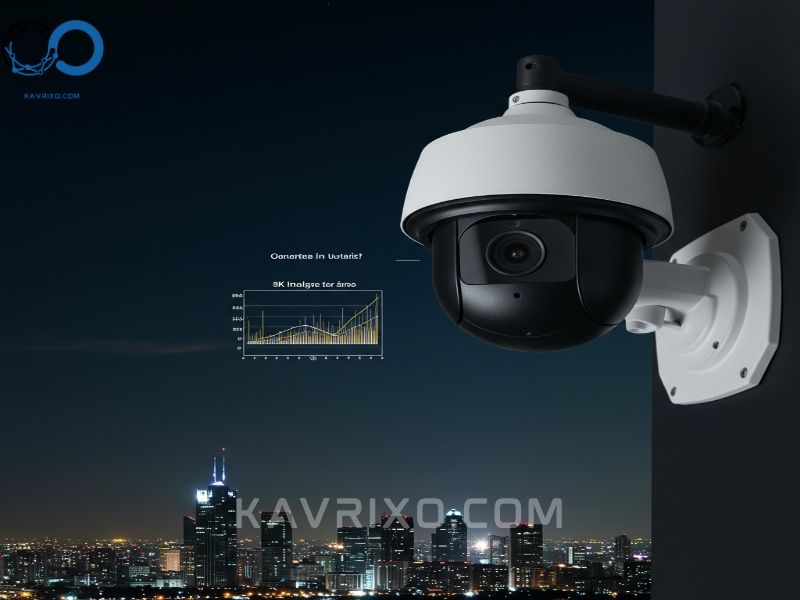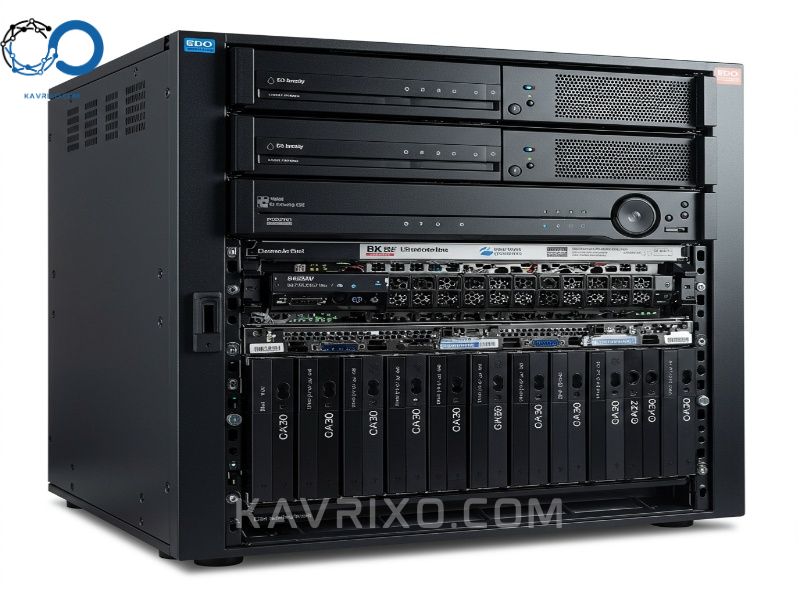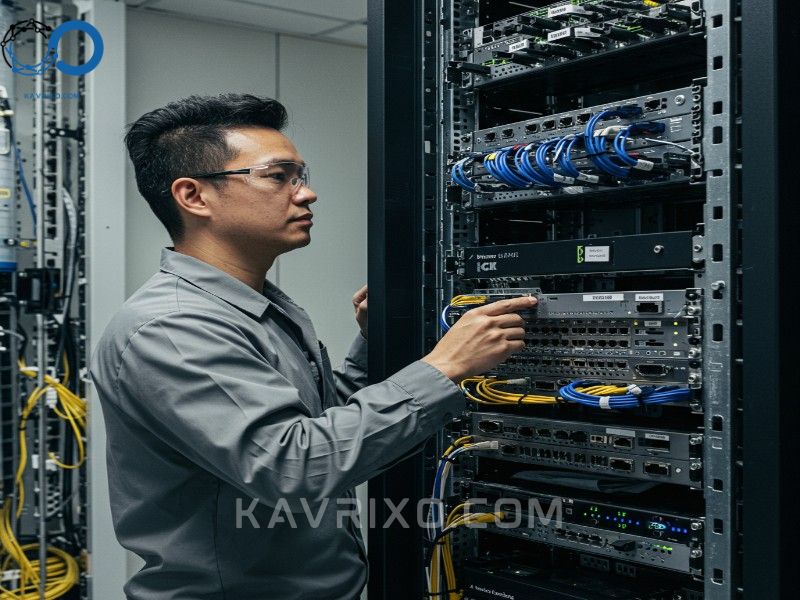For decades, security professionals and homeowners alike have chased higher resolution, recognizing that the clarity of captured footage often determines the success of an investigation. We’ve moved rapidly from standard definition to 1080p, then to 4K (Ultra HD). Now, the surveillance industry is crossing the next major threshold: 8K resolution.
The implementation of an 8k security camera is not merely an incremental upgrade; it represents a seismic shift in forensic capability, coverage area, and overall situational awareness. Whether you are managing a vast commercial property, monitoring critical infrastructure, or seeking the absolute best protection for your high-value home, the time has come to understand the transformative power of the 8k security camera system.
This comprehensive guide will delve deep into the technology, the undeniable benefits, the logistical challenges, and the essential features you must consider when selecting the best 8k security camera system available today.
Contents
- 1 Understanding the Jump to 8K: Resolution Defined
- 2 Key Benefits of Deploying an 8K Security Camera System
- 3 Essential Features to Look for in the Best 8K Security Camera System
- 4 Practical Applications: Where 8K Cameras Shine Brightest
- 5 Overcoming the Challenges of 8K Implementation
- 6 Selecting the Best 8K Security Camera System for Your Needs
- 7 Conclusion: Embracing the Future of High-Resolution Security
Understanding the Jump to 8K: Resolution Defined
When we talk about security cameras, resolution refers to the total number of pixels used to form the image. More pixels mean more detail, which translates directly into better evidence. While 4K was considered revolutionary just a few years ago, 8K pushes the boundaries of digital clarity far further, offering a level of detail that professionals previously only dreamed of.
8K vs. 4K: The Exponential Difference
The standard 4K resolution (often 3840 x 2160 pixels) boasts approximately 8.3 million pixels. This is a significant amount of data, allowing for reasonable digital zoom. However, 8K resolution (typically 7680 x 4320 pixels) contains a staggering 33.2 million pixels—four times the total resolution of 4K.
To put this into perspective, when viewing a scene captured by an 8k security camera, you can digitally zoom in four times farther than you could with a 4K camera on the same scene, while still maintaining the equivalent image quality of the original 4K recording. This difference is critical for forensic applications, where identifying a tiny detail, like a logo on a shirt or specific lettering on a vehicle, can make or break a case.
The jump from 4K to 8K is exponential, not linear. It requires fundamentally different sensor technology, processing power, and network infrastructure to handle the massive streams of data generated.

The Technology Behind True 8K Imagery
Achieving true, usable 8K resolution in a surveillance context requires more than simply a sensor with 33 million pixels. Several critical components must work in harmony:
Sensor Size and Quality
To capture 33 megapixels of light effectively, the camera requires a larger physical sensor than typical 4K or 5MP cameras. Larger sensors gather more light, which is crucial for maintaining clarity and reducing noise, especially in low-light conditions. A high-quality image sensor is the heart of any reliable 8k security camera system.
Optics and Lens Quality
A high-resolution sensor is useless if the lens cannot resolve the necessary detail. 8K demands premium, distortion-free optics. The lens must be capable of focusing light onto the tiny pixels without blurring or chromatic aberration. Manufacturers who cut corners on the lens will deliver a picture that, while technically 8K, looks soft and lacks forensic sharpness.
Processing Power and Chipsets
The camera’s internal chipset must be powerful enough to process 33MP images multiple times per second (frame rate) and compress this immense data stream efficiently. This processing power ensures the camera maintains a high frame rate (e.g., 20-30 frames per second) even under demanding conditions, preventing motion blur.
Key Benefits of Deploying an 8K Security Camera System
The primary advantage of 8K is, of course, clarity. However, the operational benefits derived from this extreme resolution extend far beyond simple image quality, impacting everything from installation costs to legal defensibility.
Unmatched Digital Zoom Capabilities (Forensic Detail)
The most compelling argument for choosing an 8k security camera lies in its digital zoom potential. In traditional surveillance, zooming in on recorded footage quickly results in pixelation, rendering the image useless for identification purposes.
With 8K, you can capture a wide area and later crop into a small portion of the image—a face, a license plate, a specific object—and still retain high definition. This feature is often referred to as “forensic detail.”
Imagine a vast warehouse or parking structure covered by a single high-resolution camera. If an incident occurs on the far side of the lot, a 4K camera might capture the event, but fail to identify the perpetrator. An 8K camera provides the necessary pixel density to zoom in post-event and extract verifiable evidence, drastically increasing the chances of successful identification.

Superior Coverage and Wide-Area Monitoring
Due to the extreme pixel count, a single 8k security camera can often replace multiple lower-resolution cameras. This is particularly advantageous for monitoring large, open spaces:
- Reduced Installation Costs: Fewer cameras mean less wiring, fewer network drops, and fewer licenses needed for Video Management Software (VMS).
- Simplified Monitoring: Operators can manage vast areas using fewer video feeds, reducing the cognitive load and decreasing the likelihood of missing critical events. A single 8K camera can effectively cover the area of four 4K cameras or sixteen 1080p cameras.
- Elimination of Blind Spots: By capturing such a massive, detailed field of view, the risk of small gaps in coverage—which often occur where the fields of view of two 4K cameras overlap—is significantly minimized.
Future-Proofing Your Security Investment
Technology evolves rapidly, and security infrastructure is a long-term investment. By opting for the best 8k security camera system today, you are ensuring that your surveillance footage remains relevant and forensically valuable for years to come.
As Artificial Intelligence (AI) and Machine Learning (ML) algorithms become more sophisticated, they will increasingly demand higher resolution data to function optimally. For tasks like advanced facial recognition or behavioral analysis, the depth of detail provided by 8K feeds will be essential for accurate identification and predictive security modeling. Choosing 8K guarantees that your hardware can support the next generation of security software.
Essential Features to Look for in the Best 8K Security Camera System
While the 8K label itself is attractive, true performance depends on the supporting features that manage the massive data load and ensure reliable operation. Selecting a successful 8k security camera system requires careful scrutiny of the specifications beyond just pixel count.
Lens Quality and Sensor Size
We touched on this earlier, but it warrants deeper discussion. When evaluating options, look beyond the simple megapixels count. Investigate the sensor size (measured in fractions of an inch, e.g., 1/1.8″ or 1/1.2″). Larger sensors perform better in low light because they capture more photons.
Furthermore, consider the lens type:
- Fixed Lens: Simple and cost-effective, but limits flexibility.
- Varifocal/Motorized Lens: Allows you to adjust the field of view (zoom and focus) remotely, post-installation. This is highly recommended for an 8K system, as optimizing the field of view is crucial for maximizing the 33MP detail.
Bandwidth Requirements and Compression Standards (H.265+)
The biggest challenge facing 8K adoption is data management. Uncompressed 8K video is prohibitively large. Therefore, efficient video compression is non-negotiable.
The industry standard for high-resolution cameras is H.265 (HEVC – High Efficiency Video Coding). However, many manufacturers of the best 8k security camera system utilize proprietary enhancements, often labeled H.265+, which further optimizes compression algorithms. This sophisticated encoding drastically reduces the necessary bandwidth and storage space without significantly compromising image quality.
When reviewing potential 8k security camera models, ensure they support advanced compression and calculate the required bitrate. A single 8K camera running at 30 fps could easily demand 30-50 Mbps of network bandwidth, depending on the scene complexity and compression setting. Understanding this requirement is crucial for preventing network congestion.
Intelligent Video Analytics (IVA) Integration
Modern surveillance relies heavily on smart features to alert operators to true threats, filtering out irrelevant motion like swaying trees or passing shadows. 8K cameras excel when paired with advanced IVA because the higher resolution provides the algorithms with more data points for accurate decision- making.
Look for features such as:
- Line Crossing/Perimeter Protection: More precise detection of intrusions.
- Object Classification: Accurate differentiation between people, vehicles, and animals.
- Loitering Detection: Higher resolution aids in tracking subjects over time.
- Heat Mapping: Useful in retail or large public areas to track traffic flow with extreme detail.
Storage Solutions: NVRs and Cloud Considerations
Recording 33MP video streams 24/7 demands serious storage capacity. A typical 4-camera 4K system might require 8TB of storage for a month of continuous recording; an equivalent 8K system could easily require 32TB or more for the same duration, even with H.265+ compression.
Network Video Recorders (NVRs)
If you are building an 8k security camera system, you must invest in enterprise-grade NVRs designed for high throughput. These NVRs should feature:
- High-Capacity Drive Bays: Support for multiple hard drives (HDD).
- RAID Configuration: Essential for data redundancy to prevent catastrophic data loss in case of a single drive failure.
- High Network Throughput: The NVR must be able to ingest the massive simultaneous data streams from all connected 8K cameras without dropping frames.

Cloud Storage
While cloud storage offers flexibility and off-site backup, continuous 8K upload is often impractical due to typical internet service provider (ISP) upload speed limitations. Cloud solutions are currently better suited for event-based recording (when motion is detected) or for backing up critical footage, rather than for 24/7 continuous 8K storage.
Practical Applications: Where 8K Cameras Shine Brightest
While an 8k security camera offers benefits in almost any scenario, there are specific environments where the sheer resolution transforms security operations from reactive monitoring to proactive, definitive evidence collection.
Commercial and Industrial Environments (Large Scale Monitoring)
Large facilities like manufacturing plants, shipping ports, distribution centers, and sprawling corporate campuses are ideal candidates for 8K technology.
In these expansive settings, using multiple 4K cameras can lead to complex cross-camera handoffs and potential gaps. A single, strategically placed 8K camera can oversee an entire loading dock, assembly line, or storage yard, providing verifiable identification of personnel, vehicle movements, and inventory status. The wide-area coverage significantly reduces the total cost of ownership compared to installing, maintaining, and powering dozens of lower-resolution devices.
High-Value Residential Protection
For luxury homes, estates, and properties containing high-value assets (art, collectibles, vintage cars), the clarity offered by the best 8k security camera system provides an unparalleled deterrent and evidence source.
If an intrusion occurs, the ability to capture distinct facial features or specific clothing details from a distance, even in poor lighting, is invaluable for law enforcement. Positioning an 8K camera overlooking entry points, gates, and perimeter fences ensures that any recorded footage is of maximum forensic quality.
Identifying License Plates and Facial Recognition at Distance
Perhaps the most critical function of high-resolution surveillance is the ability to read small, detailed text or identify subtle human features from afar.
In parking garages, toll booths, or entrance/exit gates, a standard camera might capture a vehicle but fail to read the license plate due to speed or distance. An 8k security camera maintains the required pixel density across a broader area, making it far more reliable for Automated License Plate Recognition (ALPR) systems and ensuring that critical vehicle identification data is captured accurately, even under challenging conditions.

Overcoming the Challenges of 8K Implementation
Adopting cutting-edge technology always comes with logistical hurdles. While the benefits of 8K are clear, successful deployment requires careful planning regarding network infrastructure and data management.
Network Infrastructure and Bandwidth Strain
The sheer data rate of 8K footage demands a robust network. Standard 100 Mbps Ethernet often cannot handle multiple 8K streams simultaneously without severe latency or dropped frames.
For any installation of an 8k security camera system, a Gigabit Ethernet (1000 Mbps) backbone is highly recommended, especially for the connection between the cameras and the NVR. Furthermore, utilizing Power over Ethernet (PoE) switches capable of delivering enough power (PoE+ or even PoE++) is essential, as the sophisticated processing chips and larger sensors in 8K cameras often require more wattage than older, lower-resolution models.
Storage Capacity and Data Management
The cost of storage capacity remains a major factor. As noted, 8K requires significant hard drive space. To mitigate this expense, system designers should prioritize smart recording strategies:
- Adjusting Frame Rates: While 30 fps is ideal, reducing the frame rate to 15 fps or 10 fps in areas of low activity can drastically reduce storage consumption with minimal loss of security effectiveness.
- Optimizing Bitrate: Tuning the compression settings (bitrate) to the lowest acceptable level that maintains forensic quality.
- Motion and Event Recording: Only recording in 8K continuously in the most critical zones, switching to motion-only recording in less active areas.

Cost Analysis: Is the Investment Worth It?
Initial costs for an 8k security camera and supporting infrastructure are higher than for 4K. However, a proper cost-benefit analysis often shows that the long-term value outweighs the upfront expense.
The increased upfront cost is frequently offset by:
- Fewer Cameras Required: Reduced hardware and installation labor.
- Higher Success Rate in Investigations: The ability to secure definitive, usable evidence minimizes losses associated with theft or vandalism and lowers legal costs.
- Longevity: 8K systems have a longer technological lifespan, delaying the need for full system upgrades.
If your security needs demand the highest possible level of detail, especially for monitoring high-risk or high-value assets, investing in the best 8k security camera system is undeniably a worthwhile decision.
Selecting the Best 8K Security Camera System for Your Needs
Choosing the right components requires evaluating the environment, your specific monitoring goals, and the existing infrastructure.
Wired vs. Wireless Options (PoE)
For 8K systems, wired Power over Ethernet (PoE) is almost always the superior choice.
- Stability: Wired connections provide reliable, high-speed data transmission necessary for sustained 8K streaming, avoiding the signal dropout and congestion issues common with high-bandwidth wireless connections.
- Power: PoE simplifies installation by running both power and data over a single cable, and it ensures the camera receives the necessary power required for high-performance processing.
While some manufacturers may advertise wireless 8K solutions, be extremely skeptical. Sustained, reliable 8K transmission wirelessly is technically difficult and highly susceptible to environmental interference. For the security of critical assets, reliability trumps convenience.
Professional Installation vs. DIY Setup
Due to the complexity of bandwidth management, network configuration, and NVR setup, installing a comprehensive 8k security camera system is best left to professional integrators.
Professionals can:
- Conduct Site Surveys: Accurately determine optimal camera placement to maximize the 8K field of view and minimize blind spots.
- Network Auditing: Ensure your existing network can handle the massive data load or recommend the necessary upgrades (switches, cabling).
- System Integration: Properly configure H.265+ compression and IVA settings to balance image quality, storage duration, and real-time performance.
An improperly installed 8K system may look great on paper but perform no better than a 4K system in practice if the network bottleneck prevents the full resolution stream from being reliably recorded.
Conclusion: Embracing the Future of High-Resolution Security
The transition to 8K surveillance marks the beginning of a new era in security and evidence capture. The benefits—four times the resolution of 4K, unmatched digital zoom, superior coverage, and enhanced AI integration—position the 8k security camera as the definitive choice for environments where detail is paramount.
While the requirements for bandwidth and storage are demanding, these logistical challenges are easily overcome with proper planning, efficient compression technologies, and robust NVR infrastructure. By investing in the best 8k security camera system, you are not just buying a camera; you are securing the highest level of detail available, future-proofing your assets, and ensuring that any recorded incident yields forensically undeniable evidence. The clarity of 8K is transforming security, making ambiguity a problem of the past.

Pingback: The Best Floodlight Camera Without Subscription: Ultimate Guide to No-Fee Home Security - Kavrixo Blog